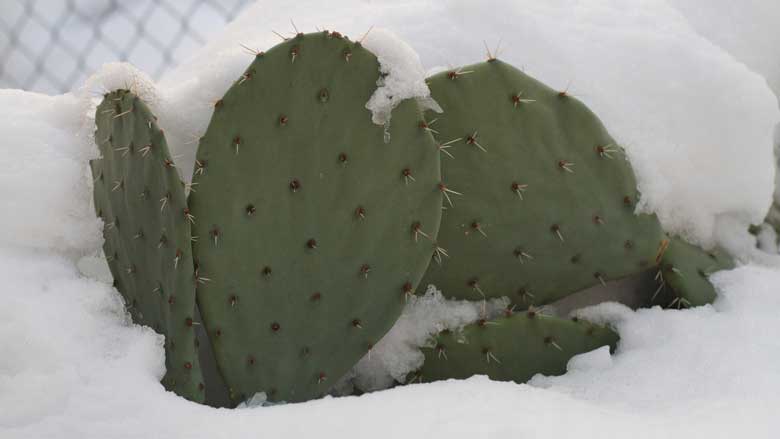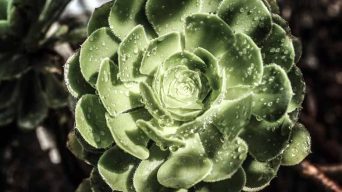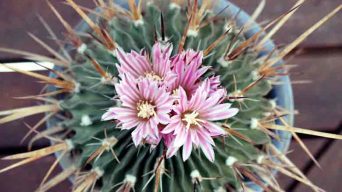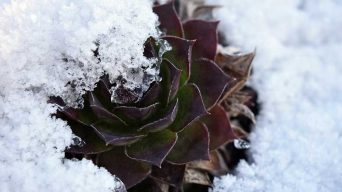Cacti can endure cold weather if you choose cold-hardy species, like Opuntia Humifusa or Sclerocactus Whipplei. With proper care—ample sunlight, reduced winter watering, well-draining soil, and protection from frost and harsh elements—cacti thrive in winter climates. Choose wisely, provide a suitable environment, and enjoy your resilient cactus year-round.
Winter is approaching, so many people will be bundling up in warm clothes. However, have you ever wondered about the fate of your cactus plants in cold weather? Can they survive it?
The answer is yes; some cactus species can tolerate cold temperatures, but not all. Generally, cacti can withstand temperatures down to 25°F, but some cold-tolerant species can handle temperatures as low as -20°F.
Most cacti are native to desert regions and are accustomed to hot, dry conditions. Nevertheless, some cacti can grow in cold winter weather with proper care. If you reside in a chilly environment, you can still grow cacti by selecting the cactus type well-suited to your local conditions.
This article will examine whether cacti can live in cold conditions and provide tips for keeping them healthy during the cold winter.
Can Cactus Grow in Cold Weather?
Cacti can thrive in cold weather conditions if you choose the appropriate type of cactus plant for your region and provide sufficient light and warmth during the day. However, it’s important to note that some cacti may not be as healthy or productive in colder temperatures.
Cactus plants native to cold climates can handle colder temperatures, but most cacti cannot tolerate frost. Hence, growing cacti indigenous to your regional climate is advisable if you reside where temperatures frequently fall below freezing.
However, you can also protect your cactus plants from cold weather by bringing them indoors or in a greenhouse during the winter. To ensure that your cacti can withstand colder temperatures, opt for a hardy cactus variety native to a cold climate.
Optimal Temperature Range for Cactus Plants
Most cacti can endure cold winter temperatures, but they have limits. The lowest temperature a cactus can withstand depends on its species, generally between -20°F and 0°F.
If the temperature falls below this range, the cactus will begin to experience damage. This damage can include brown leaves falling off, a shrinking stem, and decreased resistance to disease.
Additionally, some cactus types can tolerate cold temperatures but not frost. Frost can cause similar damage to freezing temperatures, so it’s essential to know if your cactus is susceptible to frost before placing it outside.
Growing your cactus indoors or in a greenhouse is ideal in an area with cold winters. It will safeguard your cactus from the cold and allow you to control the temperature and humidity. If you grow your cactus outside, pick a location sheltered from the wind and with plenty of sun.
With a bit of care, you can grow cactus in cold weather. Just ensure you know your plant’s limits and take measures to protect it from the elements.
Cold-Hardy Cactus Varieties
Choosing a cactus variety that can withstand low temperatures is important if you live in a cold climate.
When selecting a cactus for your garden, consider its minimum temperature tolerance and the amount of sunlight and water it needs. Here are some of the best cold-hardy cacti for cold weather:
1. Opuntia Humifusa (Eastern Prickly Pear)
Opuntia humifusa is a cactus species that can withstand temperatures as low as -20°F. It is indigenous to the eastern region of the United States and grows in woodlands, prairies, and hillsides.
The plant has broad, flat pads covered in tiny spines, producing yellow flowers in summer and red fruits in fall.
2. Sclerocactus Whipplei (Whipple’s Fishhook Cactus)
The Sclerocactus whipplei is a cactus that can withstand temperatures as low as -10°F. It is commonly found in the dry canyons and hillsides of the southwestern United States.
During the spring, this cactus produces yellow flowers and has a cylindrical shape.
3. Echinocereus Reichenbachii (Lace Hedgehog Cactus)
The Echinocereus reichenbachii is a resilient cactus that can endure temperatures as low as 0°F. It’s commonly found in grasslands, oak, and juniper woodlands across northern Mexico and the southern United States.
This cactus boasts a spiny cylindrical shape and produces lovely pink flowers in the springtime.
4. Echinocereus Viridiflorus (Green-Flowered Hedgehog Cactus)
The Echinocereus viridiflorus is a cactus that can survive in temperatures as low as 20°F. It is found in the south-central United States and northern Mexico, typically in desert scrub and grasslands.
This cactus has a small spherical or cylindrical shape, producing greenish lemon flowers in spring.
5. Ferocactus Hamatacanthus (Turk’s Head)
The Ferocactus hamatacanthus can withstand temperatures as low as 25°F. It is found in desert scrub and grasslands and is native to the southwestern United States and northern Mexico.
This cactus has a distinctive large spherical shape and produces large yellow flowers in spring.
How To Grow Cacti in Winter Climates
If you live in a region with cold winter climates, don’t let that stop you from growing cacti in your garden.
You must select a cactus species that can withstand lower temperatures, provide suitable growing conditions, and safeguard it from harsh weather.
Light Requirements
Cactus plants require ample sunlight to grow well. Although some species can tolerate partial shade, most need at least six hours of direct sun exposure daily.
It’s crucial to provide your cactus with sufficient bright light during cold weather by placing it near a south-facing window.
Water Requirements
Cacti are succulent plants that store water in their leaves, stems, and roots, allowing them to thrive in dry conditions for long periods.
Water your cactus less often in winter, but water it thoroughly when you do. You can tell when your cactus needs water by checking the soil. If the top layer of soil is dry, it’s time to water your cactus.
Soil Requirements
Cacti thrive in sandy or gritty soils with good drainage, while they struggle in wet or clay-like soils. To improve the drainage of your garden soil, add sand, gravel, or perlite to it.
Humidity Requirements
Cacti thrive in environments with low humidity levels, typically 30-40%. They can tolerate humidity levels up to 50%, but anything higher can harm their growth.
To reduce humidity in your garden during winter, consider using a fan or planting cacti in an area with good air circulation.
Protection from the Elements
In cold conditions, cactus plants can easily get damaged by wind, rain, or snow.
Placing them in a protected area near a building or fence is best to keep them safe from these elements. Alternatively, wrap them with burlap or put them in a plastic container.
Safeguarding Cacti from Frost
While some varieties of cactus plants can endure cold temperatures, they are still vulnerable to damage caused by frost. Frost can turn the leaves of cacti brown and harm its roots.
To protect cacti from frost damage, there are several preventative measures you can take:
Utilizing Frost Cloth as a Protective Layer
You can purchase a frost cloth at your nearby garden center. This lightweight, breathable fabric can be conveniently draped over your cactus to protect it from cold weather.
Indoor Placement During Cold Spells
In freezing temperatures, it’s recommended to bring your cactus indoors.
You can place it in a sunny spot close to a south-facing window. Alternatively, you can overwinter cacti indoors in a pot.
Sheltered Outdoor Locations
If you cannot bring your cactus indoors, consider placing it outdoors in a sheltered location close to a fence or building.
Additionally, you can protect your cactus by wrapping it in burlap or placing it in a plastic container.
Mulching Around the Cactus Base
You can cover the soil around your cactus with mulch to safeguard it from frost. This will insulate the soil and keep it warm.
Regulating Water Intake
Reducing the amount of water you give cacti is advisable during cold weather. This is because watering can cause the soil to freeze, damaging the roots —only water cacti when the top of the soil is dry.
Final Thoughts
If you want to grow cactus plants, remember that they can survive and even thrive in cold weather with proper cactus care.
However, choosing the right plant for your area and providing it with the appropriate environment is essential.
Water it less frequently in winter, but give it a good watering when you do. Also, protect it from harsh weather by bringing it indoors or placing it in a sheltered location.
Following these tips, you can enjoy your cactus plants all year.







